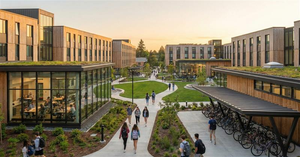In India’s fast-evolving economy, there’s a growing disconnect between what the industry expects from fresh graduates and what colleges prepare them for. While universities are producing millions of degree holders each year, employers often report that a significant portion of them are "unemployable" due to a lack of practical skills, poor communication, or insufficient problem-solving abilities. This article explores the root of the issue and how both sides — academia and industry — can work together to bridge the gap.
Understanding the Gap
Indian education has long leaned towards theory-heavy curricula. Students often graduate with textbook knowledge but limited exposure to real-world applications. Employers, on the other hand, look for skills such as:
- Effective communication
- Critical thinking
- Technical proficiency in tools or software
- Team collaboration
- Adaptability to fast-changing environments
These skills are rarely taught explicitly in college, leading to a readiness gap.
Moreover, while industries are moving rapidly toward automation, digital transformation, and sustainability, academic curricula often lag behind, being updated only once every few years — if at all.
What the Industry Wants
According to several employer surveys across sectors like IT, manufacturing, finance, and retail, the most valued traits in freshers are:
- The ability to learn quickly on the job
- Domain knowledge relevant to the role
- Proficiency in English and soft skills
- Hands-on experience through internships or live projects
- Problem-solving orientation, not just rote learning
In essence, degrees are not enough. Industry wants graduates who can “think, do, and adapt.”
Where Colleges Fall Short
Most Indian colleges are still focused on traditional pedagogy — lectures, rote memorization, and limited project-based learning. Faculty members may not always have current industry exposure, making it harder to translate academic learning into real-world applicability.
Key issues include:
- Outdated syllabi
- Lack of modern labs or tools
- Minimal interaction with professionals from the field
- Poor career guidance and mentoring
While Tier-I institutions like IITs and IIMs are exceptions, the majority of India’s colleges — especially private and semi-urban ones — need major upgrades in faculty training, infrastructure, and industry linkage.
Bridging the Gap: Collaborative Solutions
1. Curriculum Revamp
Institutions must update their syllabi in collaboration with industry experts every 2–3 years. Topics like data analytics, AI, communication, and entrepreneurship should be introduced even in non-tech courses.
2. Skill-Focused Learning
Alongside core subjects, colleges should offer workshops or certificate courses in coding, digital marketing, Excel, financial modeling, etc., based on the stream.
3. Industry-Academia Interface
Regular industry interactions through guest lectures, seminars, and mentorships should be institutionalized. This helps students understand current market demands and trends early on.
4. Internships & Live Projects
Mandatory internships in every semester (even short ones) can provide much-needed practical exposure. Colleges should actively tie up with startups and MSMEs to offer real-time project opportunities.
5. Soft Skills Training
Communication, leadership, teamwork, and business etiquette should be embedded into the academic calendar as part of personality development programs.
Role of Students in the Transition
While institutional changes are essential, students, too, must take ownership of their learning. Today’s digital world offers immense learning opportunities beyond college walls. Students must:
- Take online courses on platforms like Coursera, Udemy, or NPTEL
- Attend industry webinars and student conclaves
- Build portfolios and engage in open-source or freelance projects
- Improve communication skills through regular practice and feedback
A proactive student with real-world skills stands out far more than a passive topper.
Conclusion
Bridging the gap between industry expectations and college preparedness in India is not just the responsibility of institutions — it’s a shared mission. Colleges need to modernize, industries need to mentor, and students must step up. Only then can we ensure that India's vast youth population is not just educated but also employable — and ready to thrive in the global workplace.









Be the first one to comment on this story.